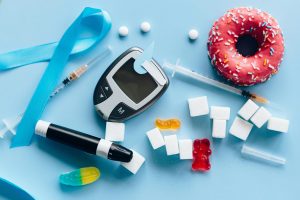Predictive Analytics: Identifying At-Risk Students Early
If you’ve ever been a student or have children in school, you know that one of the biggest concerns for both students and parents is academic success. Every student wants to do well in school and parents want their children to reach their full potential. However, sometimes students struggle and end up falling behind. This can lead to a wide range of issues such as low self-esteem, lack of motivation, and even dropping out of school. So, what can be done to avoid this and help students who are at risk of failing? This is where predictive analytics comes in.
Predictive Analytics and Student Success
Predictive analytics is the process of using data, statistical algorithms, and machine learning techniques to identify the likelihood of future outcomes based on historical data. In the education field, predictive analytics can be used to identify at-risk students early on, thereby providing the necessary support and interventions to help them succeed. This proactive approach has been shown to be highly effective in improving student success rates and ensuring that every student has the opportunity to reach their full potential.
The Power of Data
The key to predictive analytics is data. Schools have a wealth of data at their disposal, including student demographics, attendance records, test scores, and academic progress over time. By analyzing this data, patterns and trends can be identified that could indicate which students are at risk of failing. For example, low attendance or consistently low test scores may be red flags that a student is struggling and needs additional support.
Identifying At-Risk Students
So, how exactly does predictive analytics identify at-risk students? By using algorithms and machine learning techniques, the data from previous cohorts of students can be analyzed to identify patterns and indicators of success or failure. These patterns are then applied to current students, providing a prediction of their likelihood of succeeding. By using this data-driven approach, schools can pinpoint which students are at risk and take proactive measures before it’s too late.
Interventions and Support
Once at-risk students have been identified, schools can then provide targeted interventions and support to help them succeed. These interventions can include personalized tutoring, mentoring programs, or extra academic support. By targeting specific areas of weakness, schools can help students catch up and stay on track to achieve academic success.
Benefits of Early Identification
The benefits of early identification of at-risk students go beyond just improved academic success. By identifying struggling students early, schools can also reduce dropout rates and increase graduation rates. This has a positive impact on not only the individual student but also the school as a whole. Additionally, early identification allows for more efficient and effective use of resources, as interventions can be targeted to specific students rather than a one-size-fits-all approach.
Challenges and Limitations
While predictive analytics has shown to be a highly effective tool in identifying at-risk students, it also has its limitations. One major challenge is ensuring the accuracy of the predictions. While algorithms and machine learning techniques can help identify patterns, they are not always perfect. Therefore, it’s important for schools to carefully interpret the data and not solely rely on it to make decisions.
Conclusion
In today’s data-driven world, predictive analytics has become an invaluable tool in education. By analyzing data to identify at-risk students, schools can take a proactive approach and provide the necessary support and interventions to help these students succeed. Early identification of at-risk students has the potential to not only improve academic success but also positively impact graduation rates and overall school performance. With the right balance of data and human interpretation, predictive analytics has the power to change the future of education for the better.









